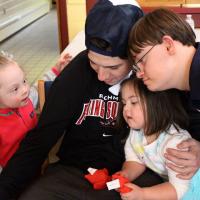Building a caring and inclusive classroom begins with an understanding of where students are at not just academically, but emotionally. Many students today have been exposed to experiences that affect their ability to regulate their emotions. By teaching children positive behavior and self-regulation, teachers can help improve outcomes for all students and build a caring community. This lesson will introduce students to mindful activities and the use of gratitude journals.
- Read more about Self-Regulation in the Classroom
- Log in or register to post comments
